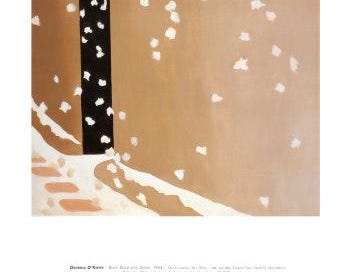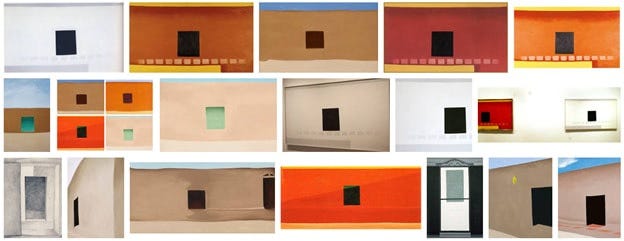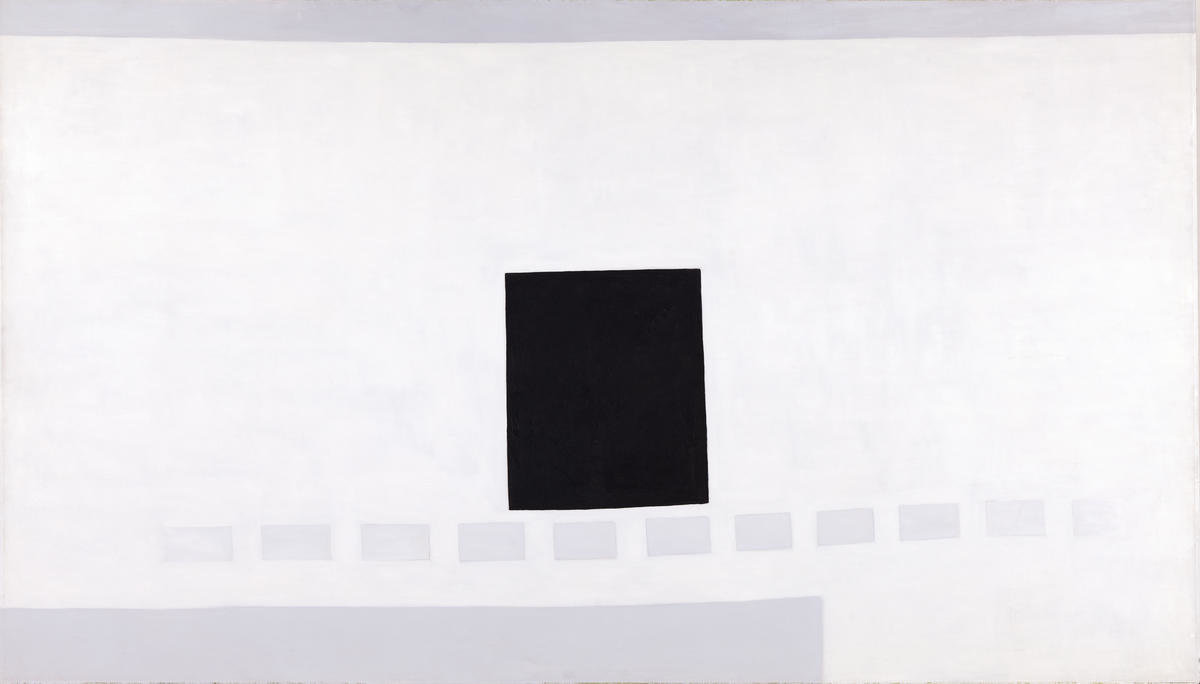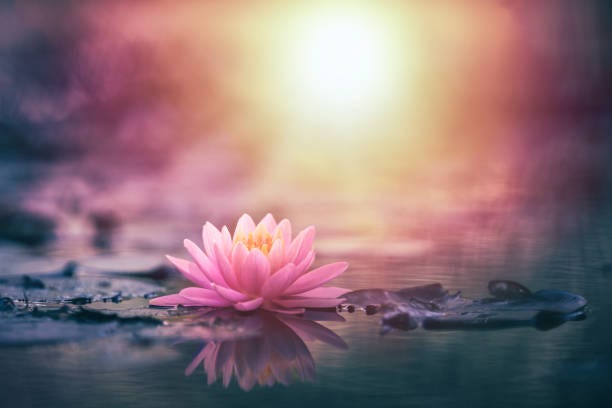Jesse: Why would anyone paint a picture of a door over and over again, like dozens of times?
Jane: But it wasn’t the same. It was the same subject, but different every time. The light was different. Her mood was different. She saw something new each time she painted it.
Jesse: And that’s not psycho to you?
Jane: Well, then why should we do anything more than once? Should I just smoke this one cigarette? Maybe we should only have sex once if it’s the same thing... Should we just watch one sunset? Or live just one day? Because it’s new every time. Each time is a different experience.
Jesse: Okay, but a door?. . . She got all obsessed with it. Just had to paint it 20 times until it was perfect.
Jane: No, I wouldn’t say that. Nothing is perfect.
Jesse: That O’Keeffe lady kept trying over and over until that stupid door was perfect.
Jane: That door was her home, and she loved it. To me, it’s about making that feeling last.
Season 3 of Breaking Bad is a masterpiece. The episodes brim with lyrical genius seamlessly woven into believable dialogue. I won’t spoil it (in case you, like me, waited decades to watch the show), but I’ll share a bit about Jesse, a young man who sells and uses meth. Jesse falls in love with Jane, a tattoo artist and recovering heroin addict. As you might imagine, their relationship gets messy and ends tragically, but their connection is profound in a way only the audience gets to see.
In Season 3, Episode 11, Abiquiú, Jesse recalls visiting the Georgia O’Keeffe Museum in New Mexico with Jane. After staring at one of O’Keeffe’s many paintings of a door, Jesse laments, “That O’Keeffe lady kept trying over and over until that stupid door was perfect.” To Jesse, her paintings seem like a sad pursuit of unattainable perfection. Jane, however, sees the doors differently.
“That door was her home, and she loved it. To me, it’s about making that feeling last.” To Jane, O’Keeffe’s work is a way to savor her connection to a place and subject. Each painting captures a new perspective, shaped by changes in light, mood, or moment.
Georgia O’Keeffe painted over 20 iterations of her patio door in Abiquiú, New Mexico. She once said, “I feel I must continually go on with that door. . .That door is what made me buy this house. I used to climb over the wall just to look at it” (My Georgia O’Keeffe Blog). O’Keeffe wasn’t seeking perfection. She was exploring. Her devotion to this door wasn’t about the subject itself but about her ability to see it in infinite ways. Ann Daly writes in her blog, My Georgia O’Keeffe, “the door is a primordial shape, much like the shells and bones and rocks that she collected and painted — all ordinary items she rendered onto the canvas with reverence and ritual.”
Today people seem to value novelty and stimulation over reverence and ritual. A quick Google search of synonyms for “repetition” yields words like “mind-numbing,” “unchanging,” and even “soul-destroying.” We’re obsessed with what’s new, what’s next, who else... There’s always another option. Bored? Watch a reel. Unstimulated? Swipe through thousands of faces and experiences on an app. The kind of meditative focus that O’Keeffe experienced feels increasingly absent.
The only form of repetition we seem to respect is the kind that fits within a capitalist framework. Specialize in your field, become an expert, and achieve financial success. In relationships, it’s about marriage, building a family, and proving devotion through conventional milestones while keeping everything as polished and presentable as possible. This is how acceptance and success are measured in modern society. For older generations, repetition is tied to performance and duty. For younger generations, repetition can feel overrated because there’s always another, possibly better, option just around the corner.
But O’Keeffe’s doors offer a counterargument. O’Keeffe said “whether you succeed or not is irrelevant. There is no such thing. Making your unknown known is the important thing—and keeping the unknown always beyond you...” This reframes repetition not as monotony but as a portal into the infinite. With repetition comes the possibility of seeing something new in the familiar. The “unknown” is what gives life meaning and mystery. Beyond every door lies another door, a new reality, a glimpse into the faraway.
Embracing repetition as an inherent part of life resonates deeply with me. As Jane suggests, returning again and again to a subject that captivates us can reveal unexpected nuances and bring genuine pleasure. While repetition can sometimes lead to destructive habits—like the pursuit of a fleeting high in addiction—its true power lies in transforming the mundane into something meaningful. By engaging with familiar experiences repeatedly, we have the opportunity to uncover subtle shifts and deepen our connection to life’s everyday moments.
Lately, life has felt a little monotonous. Not wonderful, not terrible—just a bit low. I imagine it’s the effect of being away from home and the people I love for so long while living in a foreign place. But this meditation on doors has shifted my perspective. Every day, something will be a little different. The more I engage with this experience and the more I show up, the more this place will reveal itself to me.
The same goes for teaching. Even on my worst days, what matters is returning again and again. Failure is part of the process. I fail a lot as a teacher. But when I step back, I can see those “failed” days as just another iteration, like one of O’Keeffe’s doors.
This has also changed how I think about dedication. This month, I’ve challenged myself to practice yoga every day. Each session is a chance to move differently, to evolve, and to discover new variations in my body and mind. Dedication deepens meaning. It’s not about perfection but about finding the pleasure of newness within sameness.
I see this in my partner. As a dedicated climber, he engages with rock on a level that’s both physical and poetic. He spends months working on Boulder problems or specific climbs, failing, and trying again, all while forming an intimate connection with the rock’s texture, curves, and divots. His dedication gives him a language and depth of experience I deeply admire.
I see it in my mom. She’s devoted to native gardening, to the slow and deliberate work of restoring what belongs. She can name the exact week California poppies begin to bloom, every bird that nests in the branches of a coast live oak, every insect that hovers over a patch of showy milkweed. Her work has helped create thriving ecosystems and transformed educational programs. She doesn’t garden to make the land more perfect. She plants to restore balance, to deepen her connection to the place she calls home, to witness the endless variations of life unfolding in the landscape. She craves bearing witness to the biodiversity of life.
The doors can also be a metaphor for love. O’Keeffe’s doors remind me that love is about returning to someone again and again until you begin to notice the subtle shifts in their expression, their laughter, and even their silences. It’s in the way a familiar face softens with time, how your own moods tint your perception of them, and how each encounter offers a new way of seeing them.
Repetition doesn’t have to lead to perfection, and it probably won’t. Like Jane said, perfection doesn’t exist. Instead, it can be a ritual of reverence. Rather than viewing repetition as a monotonous task or merely a stepping stone to success, what if we saw it as a gateway to knowledge, pleasure, and love? Perhaps the true answer to our obsession with novelty isn’t found in constantly seeking something new, but in deepening our relationship with what already fascinates us.
Weekly Meditation Suggestion: Engaging Drishti
For this week’s meditation, I thought it would be fitting to focus on engaging drishti. Drishti refers to a one-pointed gaze and is a key tool for cultivating dharana—one-pointed focus. One-pointed focus can be as simple as the sound of your breath or a bell that reminds you to return to the present moment. It can also take the form of an object.
For this meditation, spend five minutes selecting an object in your home or outside. Ask yourself whether the object holds personal meaning or if it’s just an everyday item you picked up. Notice its color, texture, and any other details that capture your attention. Take a minute to journal your observations, then place the object in front of you. Set a meditation timer—perhaps using an app like Insight Timer—for anywhere between 5 to 30 minutes. As you breathe, maintain your focus on the object, letting it guide you back to the present moment.
Thanks for reading!







